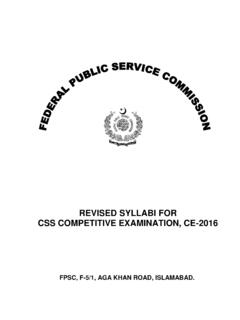Transcription of Cell culture basics Handbook - Fisher Scientific
1 cell culture basics Now includes transfectionHandbookInformation in this document is subject to change without TECHNOLOGIES CORPORATION AND/OR ITS AFFILIATE(S) DISCLAIM ALL WARRANTIES WITH RESPECT TO THIS DOCUMENT, EXPRESSED OR IMPLIED, INCLUDING BUT NOT LIMITED TO THOSE OF MERCHANTABILITY, FITNESS FOR A PARTICULAR PURPOSE, OR NON-INFRINGEMENT. TO THE EXTENT ALLOWED BY LAW, IN NO EVENT SHALL LIFE TECH-NOLOGIES AND/OR ITS AFFILIATE(S) BE LIABLE, WHETHER IN CONTRACT, TORT, WARRANTY, OR UNDER ANY STATUTE OR ON ANY OTHER BASIS FOR SPECIAL, INCIDENTAL, INDIRECT, PUNITIVE, MULTIPLE OR CONSEQUENTIAL DAMAGES IN CONNECTION WITH OR ARISING FROM THIS DOCUMENT, INCLUDING BUT NOT LIMITED TO THE USE trademarks are the property of Thermo Fisher Scientific and its subsidiaries unless otherwise is a registered trademark of GE Healthcare UK Limited. Pluronic is a registered trademark of BASF Corporation. Zeocin is a trademark of InvivoGen.
2 2014 Thermo Fisher Scientific Inc. All rights educational purposes culture basics | iiiContents1. Introduction ..1 Purpose of the to cell culture ..2 What is cell culture ? ..2 Finite vs. continuous cell of cells in culture ..3 Applications of cell culture ..32. cell culture ..4 Biosafety levels .. protective equipment (PPE) ..5 Safe laboratory practices ..5 cell culture Equipment ..6 Basic equipment ..6 Expanded equipment ..6 Additional supplies ..6 cell culture Laboratory ..7 Aseptic work area ..7 cell culture culture hood layout ..8 Incubator .. storage ..10 Cell counter ..10 Aseptic Technique ..11 Introduction ..11 Sterile work personal hygiene ..11 Sterile reagents and media ..12 Sterile | cell culture BasicsContentsFor educational purposes Technique Checklist ..13 Biological Contamination ..14 Introduction ..14 Bacteria ..14 Yeasts ..15 Molds ..15 Viruses .. antibiotics.
3 173. cell culture basics ..18 Cell Lines ..18 Selecting the appropriate cell cell lines ..18 culture vs. suspension culture ..19 Media ..20pH ..21CO2 ..21 Temperature ..21 Cell in mammalian cell of 293 cells ..23 Insect cells ..24 Morphology of Sf21 of Sf9 cell culture for Maintaining Cultured cells ..26 What is subculture?..26 When to subculture?..27 Media recommendations for common cell lines .. | vContentsFor educational purposes adherent cells ..30 TrypLE dissociation Adherent cells ..31 Materials for passaging adherent on subculturing adherent insect cells ..32 Subculturing Suspension cells ..33 Passaging suspension culture vessels ..33 Materials for passaging suspension on subculturing suspension insect cells ..36 Freezing cells .. for cultured cells ..39 Thawing Frozen cells ..40 Guidelines for thawing ..40 Materials frozen Transfection basics ..41 Introduction to is transfection?
4 Of Transfection ..43 Transient transfection ..43 Choosing a transfection Delivery lipid-mediated delivery ..48vi | cell culture BasicsContentsFor educational purposes phosphate co-precipitation ..49 DEAE-Dextran-mediated delivery ..50 Delivery by other cationic delivery ..52 Electroporation ..53 Other physical delivery methods ..54 Cationic Lipid-Mediated lipid transfection Gene properties of viral vectors ..58 Common viral Transfection of Stable Transfectants ..62 Selection antibiotics for eukaryotic cells ..62 Reporter Gene Assays ..63 Transfection regulation reporter and Non-coding RNA Research ..65 Glossary of common RNAi RNAi works ..66siRNA analysis ..67 Choosing an RNAi Transfection Methods ..69 Factors Influencing Transfection type .. 69 Cell health and .. | viiContentsFor educational purposes of molecule a Transfection Method (non-viral) ..73 Continuous cell cells and finite cultures.
5 74 Selecting a Viral DNA Delivery in mammalian in insect for Plasmid DNA Transfection ..77 Vector considerations ..77 Quality of plasmid product and ..78 Optimization of Plasmid DNA Transfection ..78 Considerations for calcium phosphate co-precipitation ..79 Considerations for cationic lipid-mediated for electroporation ..82 Selection of Stable Transfectants ..83 Before curve ..83 Selection workflow ..83 Selecting a RNAi vs. vector approaches ..85 Non-vector siRNA transfection ..88 Vector-mediated RNAi ..89 Guidelines for RNA RNA ..91 Transfection efficiency ..91 Positive controls ..91 Negative ..92siRNA | cell culture BasicsContentsFor educational purposes of transfection reagent ..93 Cell density ..93 Exposure to transfection agent/siRNA of serum during for a successful siRNA experiment ..94 Optimization of siRNA affecting siRNA transfection efficiency .. culture and Transfection Products.
6 97 Cell lines ..97 Media for mammalian cell for insect cell products for cell reagents for cell culture ..100 Antibiotics and factors and purified products for cell Transfection System ..103 RNA Resources ..104 Mammalian and insect cell and tissue analysis ..104 Transfection selection tool .. 104 Safety data of analysis ..104 Technical support .. educational purposes IntroductionCell culture basics | 1 Purpose of the HandbookCell culture basics Companion Handbook is a supplement to the cell culture basics instructional videos available online at Handbook and videos are intended as an introduction to cell culture basics . The first four chapters of the Handbook focus on cell culture , covering topics such as getting familiar with the requirements of a laboratory dedicated to cell culture experiments, laboratory safety, aseptic technique, and microbial contamination of cell cultures, as well as providing basic methods for passaging, freezing, and thawing cultured cells .
7 The subsequent two chapters of the Handbook focus on various transfection technologies and provide general guidelines for the selection of the appropriate transfection method, the transfection of cells with plasmid DNA, oligonucleotides, and RNA, as well as culture preparation for in vitro and in vivo transfection and selection of the transfected information and guidelines presented in the Handbook and the instructional videos focus on cell lines (finite or continuous) and omit experiments and techniques concerning primary cultures and stem cells , such as isolating and disaggregating tissues, reprogramming cells into pluripotent stem cells , or differentiating stem cells into various that while the basics of cell culture experiments share certain similarities, cell culture conditions vary widely for each cell type. Deviating from the culture conditions required for a particular cell type can result in different phenotypes being expressed; we therefore recommend that you familiarize yourself with your cell line of interest, and closely follow the instructions provided with each product you are using in your | cell culture BasicsPart 1.
8 IntroductionFor educational purposes to Cell CultureWhat is cell culture ? cell culture refers to the removal of cells from an animal or plant and their subsequent growth in a favorible artifical environment. The cells may be removed from the tissue directly and disaggregated by enzymatic or mechanical means before cultivation, or they may be derived from a cell line or cell strain that has already been already established. Primary culturePrimary culture refers to the stage of the culture after the cells are isolated from the tissue and proliferated under the appropriate conditions until they occupy all of the available substrate ( , reach confluence). At this stage, the cells have to be subcultured ( , passaged) by transferring them to a new vessel with fresh growth medium to provide more room for continued growth. Cell lineAfter the first subculture, the primary culture becomes known as a cell line. Cell lines derived from primary cultures have a limited life span ( , they are finite; see below), and as they are passaged, cells with the highest growth capacity predominate, resulting in a degree of genotypic and phenotypic uniformity in the population.
9 Cell strainIf a subpopulation of a cell line is positively selected from the culture by cloning or some other method, this cell line becomes a cell strain. A cell strain often acquires additional genetic changes subsequent to the initiation of the parent vs. continuous cell lineNormal cells usually divide only a limited number of times before losing their ability to proliferate, which is a genetically determined event known as senescence; these cell lines are known as finite. However, some cell lines become immortal through a process called transformation, which can occur spontaneously or can be chemically or virally induced. When a finite cell line undergoes transformation and acquires the ability to divide indefinitely, it becomes a continuous cell conditionsCulture conditions vary widely for each cell type, but the artifical environment in which the cells are cultured invariably consists of a suitable vessel containing a substrate or medium that supplies the essential nutrients (amino acids, carbohydrates, vitamins, minerals), growth factors, hormones, and gases (O2, CO2), and regulates the physico-chemical milieu (pH, osmotic pressure, temperature).
10 Most cells are anchorage-dependent and must be cultured while attached to a solid or semi-solid substrate (adherent or monolayer culture ), while others can be grown floating in the culture medium (suspension culture ). CryopreservationIf a surplus of cells are available from subculturing, they should be treated with the appropriate protective agent ( , DMSO or glycerol) and stored at temperatures below 130 C (cryopreservation) until they are needed. For more information on subculturing and cryopreserving cells , refer to the Guidelines for Maintaining Cultured cells , page | 3 Part 1. IntroductionFor educational purposes of cells in cultureCells in culture can be divided in to three basic categories based on their shape and appearance ( , morphology). Fibroblastic (or fibroblast-like) cells are bipolar or multipolar, have elongated shapes, and grow attched to a substrate. Epithelial-like cells are polygonal in shape with more regular dimensions, and grow attached to a substrate in discrete patches.




